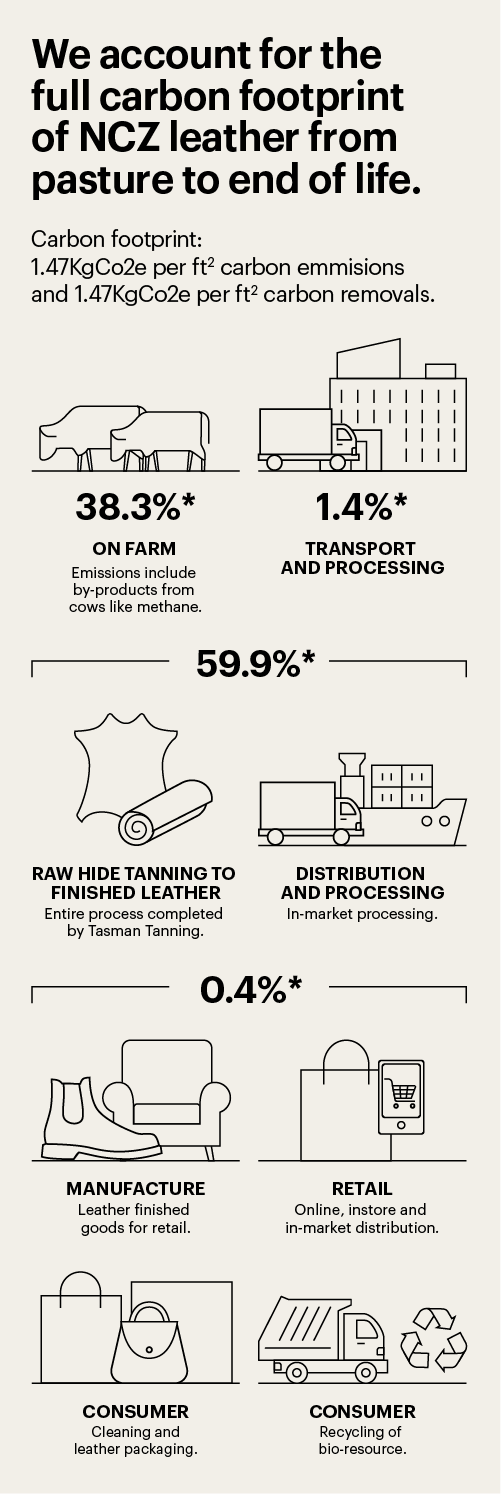Quality New Zealand Hides & Skins
Here at Silver Fern Farms, we supply premium preserved New Zealand cattle hides and skins, calfskins, sheep, lamb and deer skins as leather pre-cursors. Hides and skins are processed through trusted local partners and supplied to tanneries and leather finishers worldwide. Our New Zealand hides and skins are prized for their consistent quality, backed by Silver Fern Farm’s global supply chain transparency, trust and provenance.
Products are collected to your specifications, including preservation state (wet salted or wet blue) and grade.
Our leathers team bring decades of industry expertise and a globally respected, cross-cultural approach to client service. We can work with you to build a credible, sustainable, environmentally conscious brand story with products from grass-fed, free-range New Zealand farms that meet strict animal welfare standards.
Our premium hides and skin products include:
- Bovine hides (ox, cow, heifer, bull)
- Calfskins
- Ovine (lamb, sheep)
- Deer skins
By partnering with us, our customers receive a trusted supply chain network, reliable supply, and optimal partnerships for delivery every step of the way. While we don’t make leather, we have a range of raw hides, skins and wool products available on request. Our global service solutions can also provide support with manufacturing specifications, logistics, sustainability, regulatory guidance, and marketing to help customers grow value for their businesses around the world.
As an example, we have recently worked in partnership with Tasman Leathers to create New Zealand's first-ever Toitū-certified Net Carbon Zero Leather. Ethically raised, traceable to supplying farms, and fully certified, it meets the needs of conscious consumers who demand both premium quality and tangible proof of positive change.
Reasons to buy from Silver Fern Farms:
- Buy directly from the primary processor: When you work with Silver Fern Farms, we have a direct link to supplying farms so we can offer a transparent, direct supply chain with no intermediaries
- Well-established global supply chain selling to 60+ countries.
- Regulatory compliance assistance both domestically and internationally
- Our hides and skins are sourced from New Zealand grown, grass-fed, free-range animals, ideal for customers seeking a commitment to animal welfare and trusted provenance
- Our Sustainability Action Plan demonstrates our commitment to nature positive farming including through our validated Science Based Targets initiative (SBTi) for Forest, Land, Agriculture (FLAG) emissions reduction targets and a no-deforestation commitment
- Access to scale from New Zealand’s largest primary processor of beef, sheep, and venison products
Animal Traceability
Traceability is important for product safety and quality assurance programs. It helps to protect our livestock from disease and harm, as well as farmers' livelihoods and New Zealand’s reputation as a leading supplier of premium farm products.
In addition, our beef and venison livestock are also recorded in the National Animal Identification and Traceability (NAIT) system overseen by OSPRI – a not-for-profit partnership between New Zealand primary industries and government providing auditable evidence of the origin and provenance of our products.
Certification Customers & Consumers Can Trust
Our Net Carbon Zero finished leather is Toitū-certified to the ISO 14067:2018 product standard. Toitū Envirocare is New Zealand’s leading independent climate performance certifier and a government-owned Crown Research Institute. Certification is enabled through our partnership with AgResearch, which measures emissions across the entire lifecycle—from animal birth to finished leather.
To offset emissions, we use satellite technology and machine learning to help us identify on-farm permanent vegetation that is absorbing the equivalent amount of Carbon Dioxide from the atmosphere. We then contract and purchase this carbon from our own farmer suppliers. This approach rewards farmers for producing top quality livestock and actively caring for the land through their environmental management practices.
